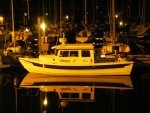Our 16 footer has two batteries, one a deep cycle and one, well, not a deep cycle. The battery selector switch is in a rather inaccesible place behind the two batteries. My questions are these,
1. Is there a proper way to select the batteries (like battery one for starting, then switch to 'both')?, or
2. Can I just leave the switch on 'both' all the time and forget about it?
3. Should I move the switch, and, if so, where to on a 16 footer?....
Thanks
1. Is there a proper way to select the batteries (like battery one for starting, then switch to 'both')?, or
2. Can I just leave the switch on 'both' all the time and forget about it?
3. Should I move the switch, and, if so, where to on a 16 footer?....
Thanks

